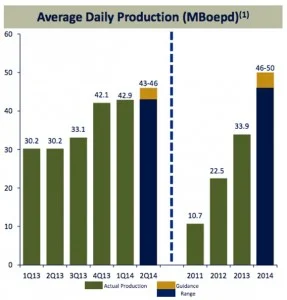Beginning on June 1st, the North Dakota Industrial Commission (NDIC) began implementing its first in a series of policy changes aimed at reducing flaring in the Bakken.
The NDIC's new "gas capture plan" (GCP) rule will require E&P companies to submit a document with their application for a permit to the commission specifying how they plan to capture gas produced from their drilling operations.
In May of 2014, the North Dakota Pipeline Authority (NDPA) released production data for March of 2014, indicating 33 % of natural gas was flared in the state. With the new policies implemented, the NDIC hopes to capture 85% of natural gas produced in the state in the next two years, and at least 90% by 2020.
Since the boom began, flaring has conceivably prevented the state from collecting untold amounts of money in revenue from production. North Dakotan mineral owners, whom have also felt slighted, began filing class action lawsuits against oil companies in late 2013 for royalty payments lost due to flaring. Recently, in May of 2014, a federal judge dismissed 13 of 14 lawsuits filed against oil and gas operators. These among other reasons have been the impetus for NDIC's policy changes relative to flaring.
Read more: Mineral Owners Sue Over Bakken Flaring
Under the GCP, flaring is limited to one year after first production from the well. After that time frame elapses, the well must be connected to a gas gathering line or capped. The well can also be equipped with an electrical generator, or compression or liquefaction system that consumes at least 75% of the gas.
The new regulations are based on recommendations from the North Dakota Petroleum Council (NDPC). The NDPC is a trade association that represents more than 500 companies involved in all aspects of the oil and gas industry including oil and gas production, refining, pipeline, transportation, mineral leasing, consulting, legal work, and oilfield service activities in ND, SD and the Rocky Mountain Region.
Read more at dmr.nd.gov




